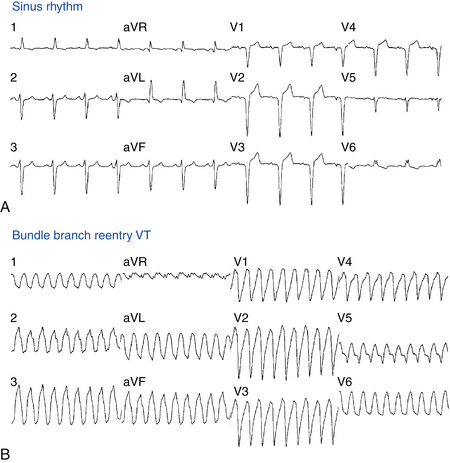
We have found that IVCD is an important ECG predictor of prognosis in patients with CHF. Further analysis of IVCD and QTc showed that, for different cut-off values, IVCD is better than QTc, and that there is a graded increase in mortality with increasing value of IVCD. However, the low specificity (0.63) for the second criterion (R-to-S interval >100 ms) and the low consecutive specificity (0.57) could potentially limit the diagnostic efficiency of the proposed algorithm in a patient with IVCD should he or she develop SVT. Ventricular tachycardia (due to long QT) Change in mental status Worsening renal function Fatigue, or decrease in exercise tolerance Patients with acquired complete heart block or high-grade AV block with two or more nonconducted P waves in a row, are usually symptomatic. IVCD was defined QRS >110ms without the criteria of complete or incomplete bundle-branch block. Methods: Between 20, we evaluated the patients who underwent 12-lead electrocardiography. SVTs from a sinoatrial source: Inappropriate sinus tachycardia Sinoatrial node. Hypothesis: Long-term prognosis of patients with IVCD in structurally normal heart would be poorer than patients without IVCD. BBB or IVCD Pacemaker Tox (Sodium Channel Blockers) WPW Hyperkalemia SVT. The addition of plasma sodium, age and NYHA class had no added benefit on the predictive power of the model. SVT A-Flutter (150 +/- 20) A-Fib A-Flutter with variable AV conduction (regular morphology) MAT (varying atrial. A model based on multivariate analysis showed that IVCD, MVO2 and left ventricular ejection fraction (LVEF) were the best predictors of mortality. On bivariate analysis, IVCD and MVO2 were better predictors when combined together. On univariate analysis by the Cox proportional Hazard method, intraventricular conduction delay (IVCD) and QTc were identified as predictors of mortality. Cardiopulmonary exercise testing and radionuclide ventriculogram were also performed where possible. Other important diagnostic clues are increased ventricular wall thickness and a family history of hypertrophic cardiomyopathy.

Relevant data from 241 CHF patients were analysed retrospectively. End-stage hypertrophic cardiomyopathy is associated with a high risk of atrial and ventricular arrhythmias and death due to progressive heart failure or VT. The purpose of this study was (a) to identify the best ECG parameter that predicts mortality, (b) to evaluate the prognostic marker of ECG against well-established indicators of prognosis. All AV nodal blocking medications (e.g., adenosine, calciumchannel blockers, beta blockers) should be used with caution in these patients when treating an irregular or widecomplex SVT. Chronic heart failure (CHF) is associated with high mortality, and there are several established clinical and laboratory parameters that predict mortality in CHF. The SVT may appear as a narrow or widecomplex QRS, depending on AV node involvement and the direction of the reentry circuit.


 0 kommentar(er)
0 kommentar(er)
